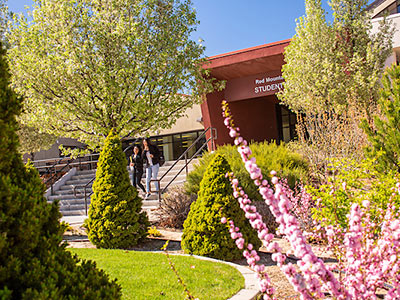May 2024
Overview
Applying for tenure is one of the most important steps in an academic faculty member’s career, and it provides an opportunity to compile and present a record of your many accomplishments. In years past, applicants would submit physical binders, but today, they assemble their materials into a single PDF file called a "Digital Tenure Binder." Your Digital Tenure Binder should offer readers a concise summary of the work that you have performed during your probationary period. By providing both comprehensive evidence of your professional activities, as well as concise summaries and reflections, readers will be able to assess the scope, quality, and impact of your work.

Because the VPAA and the President typically review several applications for tenure each year, it is important to ensure that your Digital Tenure Binder is well organized, comprehensive, and easy to follow. Your tenure committee will help you to decide what materials are most relevant. If you have questions about the tenure process, speak with your tenure committee chair or Dean.
Tenure Application Timeline
Most tenure-track faculty complete a three-year probationary period, during which they submit six "Summary of Tenure-Related Activities" reports to their tenure probationary committee, one each semester. At the end of their third year, if their tenure committee is supportive, the committee will invite the faculty member to submit their application for tenure in the coming Fall Semester of their fourth year.
As the final decision on awarding tenure is made annually by the Board of Regents during its Spring quarterly meeting in March/April, the application timeline runs as follows (guidance on how to produce the Digital Tenure Binder appears further below):
- On or before November 1: The faculty member submits their Digital Tenure Binder electronically to the VPAA Office for distribution to all approvers.
- In early November: The tenure committee reviews the Digital Tenure Binder and provides its recommendation
- In later November: The applicant’s supervisor reviews and provides their recommendation on the form*.
- In December: The VPAA reviews and provides their recommendation.
- In December/January: The college President reviews and provides their recommendation.
- In late January: The names of recommended applicants are submitted to NSHE by the Office of the President for inclusion on the March/April Board of Regents quarterly meeting agenda, and the college notifies the applicants whose names have been forwarded to the Board for its consideration.
- In March/April: The Board of Regents votes on tenure cases at its Spring quarterly meeting, typically as part of its consent agenda.
*Some faculty members have a Program Director as their supervisor, and the division Dean is their second-level supervisor. In these cases, both levels review the tenure application and provide recommendations.






